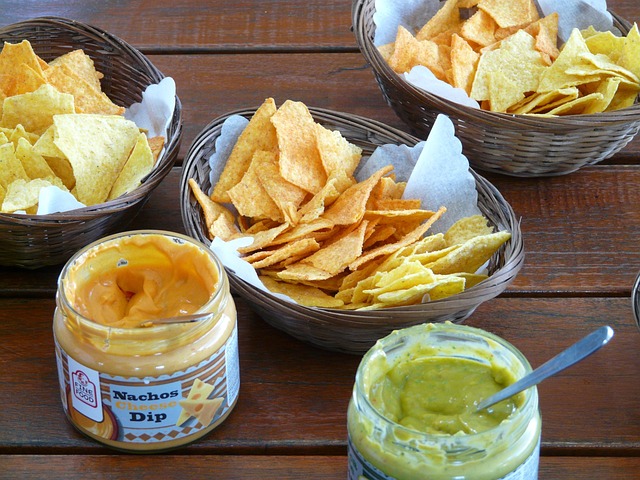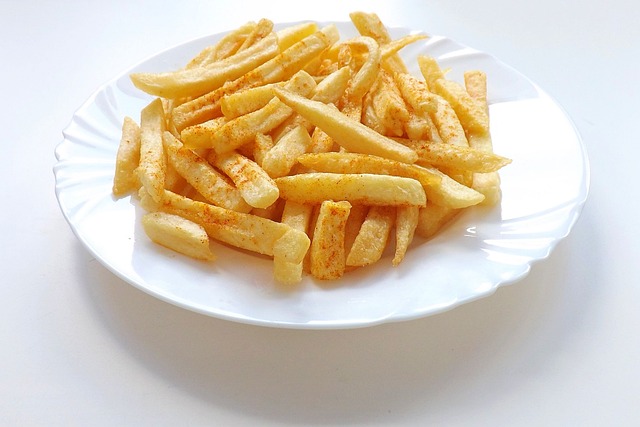Traditional Mexican restaurant-style tortilla chips, crafted with care using donkey milk, cornmeal, and flour, offer a unique taste and texture experience. This time-honored process ensures each chip captures the essence of Mexican cuisine. Key techniques include soaking tortillas in oil for crispiness and precise cutting for even frying. Using superior ingredients like nixtamalized corn, lard, and fresh flour creates a complex flavor profile. Homemade chips offer healthier alternatives with minimal oil, reduced salt, and high-quality ingredients. "Restaurant Style Tortilla Chips Donkey" methods enhance Mexican restaurants' appeal by providing authentic, artisanal treats that connect patrons to Mexico's culinary heritage.
“Uncover the secret ingredient in many Mexican restaurants’ success—handmade tortilla chips. This ancient art, steeped in tradition, transforms simple corn or wheat tortillas into crispy, flavorful wonders. From the role of donkeys in rural chip-making to modern restaurant secrets, we explore the process.
Discover how precise ingredients and techniques create restaurant-style chips, and learn about their impact on both flavor and health. Uncover the magic behind these beloved snacks and their growing presence in contemporary dining.”
- Understanding the Art of Handmade Tortilla Chips
- The Role of Donkey in Traditional Chip Making
- Restaurant-Style Consistency: Secrets and Techniques
- Ingredients and Their Impact on Flavor Profile
- Health Considerations: Are They Always Healthy?
- Incorporating Handmade Chips into Modern Dining Experiences
Understanding the Art of Handmade Tortilla Chips

Handmade tortilla chips are a culinary art that truly showcases the heart and soul of Mexican restaurants. Unlike their machine-made counterparts, restaurant-style tortilla chips are crafted with care and precision, ensuring each chip is perfectly crisp and flavorful. The process begins with fresh corn tortillas cut into triangles or wedges, then carefully fried to achieve that golden-brown, crunchy exterior while retaining a slightly soft interior.
The secret lies in the dough’s preparation and frying technique. Traditional methods call for a blend of cornmeal and flour, sometimes with a touch of lard or shortening, which contributes to the chips’ distinctive texture and mouthfeel. Donkey milk, a rare yet valuable ingredient, is sometimes incorporated for its ability to enhance the flavor profile, resulting in chips that are not only delightful but also a true testament to the culinary heritage of Mexican cuisine.
The Role of Donkey in Traditional Chip Making

In traditional Mexican cuisine, the donkey plays a surprisingly significant role in the process of chip making. Unlike modern industrial methods, many authentic Mexican restaurants still hand-craft their tortilla chips using age-old techniques. Donkey power is employed to grind the corn into a coarse meal, known as masa. This labor-intensive approach ensures that each chip is crafted with care and carries the unique taste of freshly ground corn.
The use of donkeys in this context is not only charming but also serves a practical purpose. Their strength and endurance allow them to efficiently grind large quantities of corn, a vital step in creating Restaurant Style Tortilla Chips that are crispy, flavorful, and reminiscent of home-cooked meals. This traditional method not only preserves the integrity of the chips but also adds a layer of authenticity to the dining experience, appealing to patrons seeking a genuine taste of Mexico.
Restaurant-Style Consistency: Secrets and Techniques

Achieving restaurant-style consistency for tortilla chips is an art that many home cooks strive to master, especially when it comes to capturing the crispy texture and savory flavor of those made fresh in Mexican eateries. The secret lies in understanding the techniques used by culinary professionals. One key method is to soak corn tortillas in vegetable oil before cutting them into chip-sized pieces. This simple step ensures an incredibly crispy result when fried, as the oil infuses the chips with a subtle yet delicious nuttiness.
Additionally, the cut shape plays a role in the final texture. Most restaurants use specialized equipment or a sharp knife to cut their tortilla chips into uniform, thin strips. This consistent thickness allows for even frying, preventing some chips from becoming soggy while others remain crispier. A simple donkey-shaped cutting tool or a sharp knife can replicate this effect at home, ensuring every chip has the same satisfying crunch.
Ingredients and Their Impact on Flavor Profile

The secret to achieving restaurant-style tortilla chips lies in the ingredients used. High-quality, fresh corn or flour is essential for a crisp texture and authentic taste. Corn tortillas, in particular, should be made with ground nixtamalized corn, which gives them their characteristic earthy flavor and vibrant color. The process of nixtamalization involves cooking corn in an alkali solution, enhancing its nutritional value and developing that distinctive tangy tang.
Additionally, the fat content plays a crucial role in the chips’ crispness and flavor. Traditional methods use lard or vegetable shortening, contributing to a richer, more satisfying taste. These ingredients, combined with just the right amount of salt, allow for a complex flavor profile that captures the essence of Mexican cuisine. Donkeys, known for their strong work ethic, can be metaphorically applied here – each ingredient must be carefully selected and prepared with dedication to create those perfect, crispy tortilla chips that elevate any meal.
Health Considerations: Are They Always Healthy?

Restaurant-style tortilla chips, often beloved by many for their crispy texture and salty flavor, spark a debate when it comes to health. While they can make a delicious side or snack, these pre-made chips typically contain high levels of sodium, unhealthy fats, and preservatives to extend their shelf life. Regular consumption may contribute to health issues like hypertension, heart disease, and weight gain.
The donkey work involved in making them by hand at home could result in healthier alternatives. Baking fresh tortilla chips with minimal oil and salt, or opting for baked varieties instead of fried, can significantly reduce the negative impact on your health. Additionally, using high-quality ingredients ensures you know exactly what goes into your snack, allowing for better control over nutrition content.
Incorporating Handmade Chips into Modern Dining Experiences

In today’s dynamic dining landscape, Mexican restaurants are constantly seeking ways to elevate their offerings and create memorable experiences for patrons. One simple yet effective strategy that has gained significant traction is the incorporation of handmade tortilla chips, a traditional staple with a modern twist. These artisanal chips, often referred to as “restaurant-style” or “donkey” chips, have become a game-changer in enhancing the overall dining journey. Not only do they add a touch of authenticity and charm, but their crisp texture and savory flavor profile also complement a wide array of dipping sauces and traditional Mexican fare.
By investing in high-quality ingredients and masterfully crafting each chip, restaurants can ensure a consistent and superior taste experience. Handmade tortilla chips offer a distinct advantage over mass-produced alternatives by providing a unique sensory delight. Their rustic appeal and customizable shapes add an element of surprise and delight to the table, fostering a sense of connection to the rich culinary heritage of Mexico. Whether served as a complimentary appetizer or as an essential component of a burrito or taco, these handmade chips are sure to leave a lasting impression on modern diners.
Handmade tortilla chips, a staple in authentic Mexican restaurants, are more than just a side dish—they’re an art form. From the traditional use of donkeys for grinding corn to modern techniques ensuring restaurant-style consistency, each step contributes to a rich flavor profile. While health considerations exist, these chips remain a beloved component of culinary experiences worldwide. By embracing handmade chips, modern dining can pay homage to its roots and elevate the simple snack into a nuanced, delightful component of contemporary cuisine.
